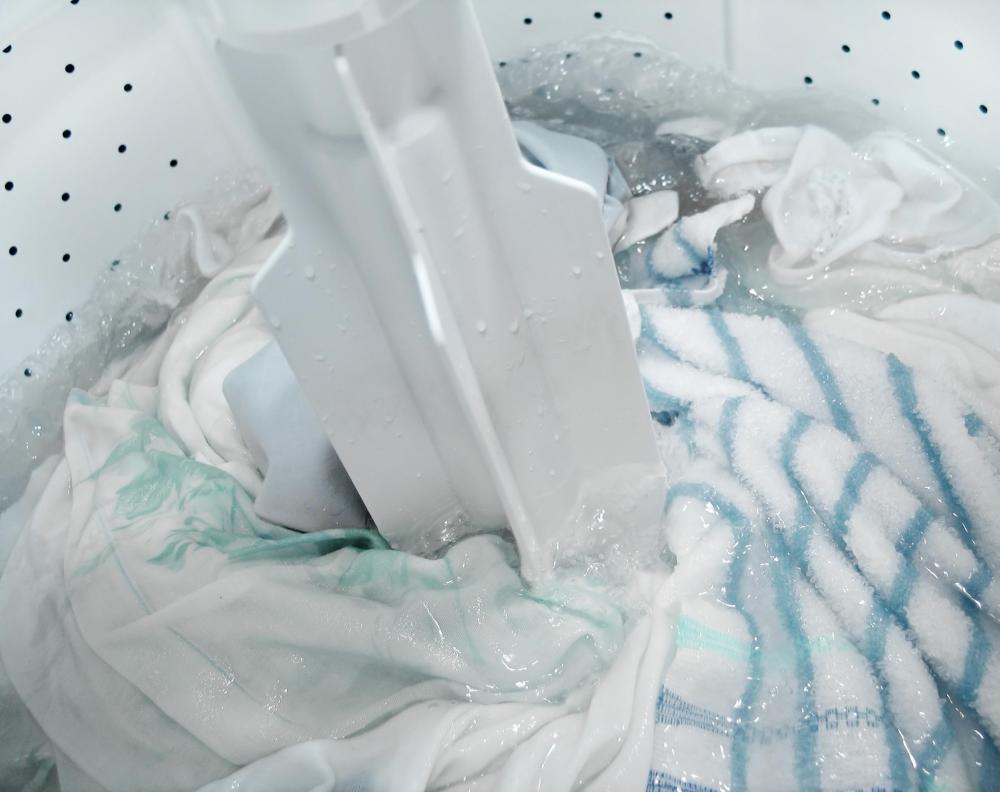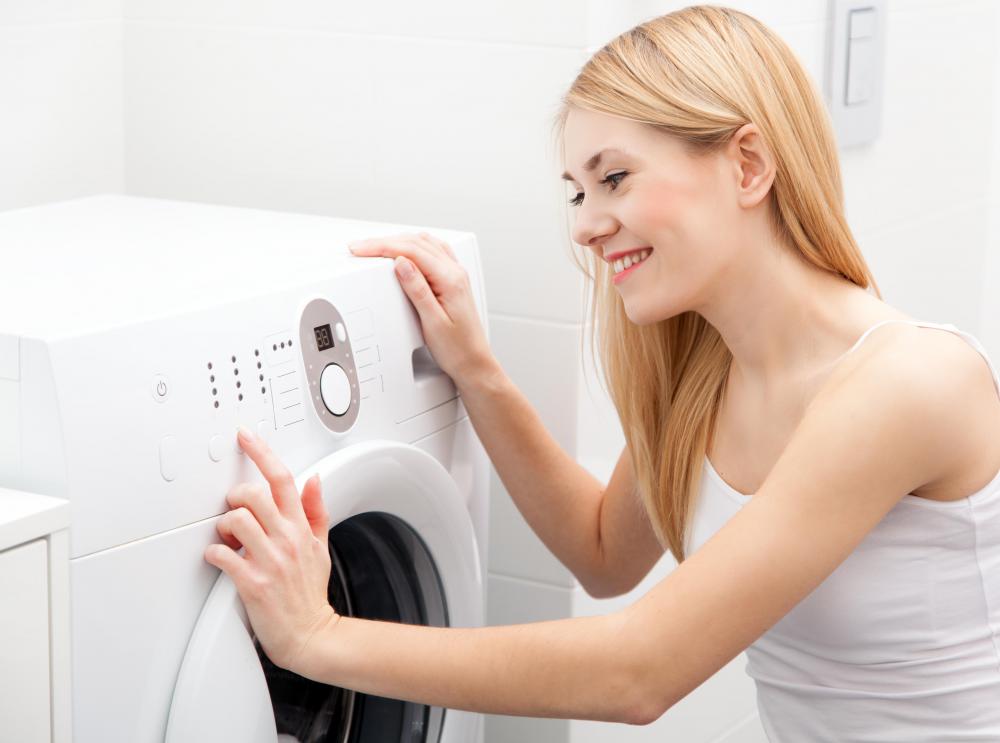At WiseGEEK, we're committed to delivering accurate, trustworthy information. Our expert-authored content is rigorously fact-checked and sourced from credible authorities. Discover how we uphold the highest standards in providing you with reliable knowledge.
How Do I Deal with Common Washing Machine Problems?
Common washing machine problems can usually be dealt with by the user rather than a repair technician. A washing machine that will not operate at all is probably disconnected in some way from its electrical power supply. Washers that fail to agitate or spin typically have a disengaged or malfunctioning safety switch. A machine that will not drain may have a kinked or clogged drain hose. Water leaks are often caused by a faulty door, tub, or water supply hose seal.
One of the most common washing machine problems is a total failure to operate. This condition is almost always caused by a disruption of the machine’s electrical supply. Vibrations or movement of the machine can sometimes cause the cord to fall out of the electrical outlet. You should first make sure that the washer is fully plugged in to the outlet. If the washing machine is indeed plugged in, check the main circuit panel for a tripped breaker or blown fuse before calling a repair technician.

Washing machine problems also occur when the safety switch is not engaged or malfunctions. This device will not allow the machine to agitate or spin until the lid or door is completely closed. If the machine is unable agitate or spin, make certain that nothing is caught in the lid or door to prevent it from fully closing. You can also check the switch for functionality by depressing it with a plastic writing pen. If the washing machine won't agitate or spin using the pen, the safety switch may need to be replaced by a repair technician.

Another of the most common washing machine problems is a lack of draining ability. Look behind the washer with a flashlight to see if the hose is kinked or pinched in any way. If unkinking it does not solve the problem, you may have a clogged drain hose. A clog can sometimes be cleared by placing your hand over the outlet end of the hose while the machine is draining. If these remedies fail to solve the problem, you might have a clogged or faulty pump that requires a visit from a service technician.

Some washing machine problems such as water leaks are typically caused by damaged seals. These seals are located at the base of the tub on top-loading washers and around the door of front-load models. They are also located on each end of the machine’s water supply hoses. The best way to deal with this problem is to determine the exact location of the leak. Supply hose and door seals are usually easy to replace, but a tub-seal replacement will probably require a service technician.
AS FEATURED ON:
AS FEATURED ON:













Discussion Comments
Another common problem that many people have with their washing machines is foul odors coming form the inside of the washing basin. This can be caused by a variety of reasons, from soap build-up to smelly items being placed in the basin.
Fortunately, it is easy to eliminate bad smells in your washing machine. All you have to do is add several cups of white vinegar with 5 percent acid to the basin, and choose the settings to run the washing machine as if you were washing a small load of clothes. After the machine has gone through this cycle, it should smell fresh and clean.
If you still notice an odor however, you can do the same process using a cup of bleach instead of vinegar. Just be sure to run the machine through an extra rinse cycle to remove all of the bleach to prevent your clothes from fading next time you wash them.
Sometimes when there is a problem with a washing machine agitator, there may be fabric, strings, or threads wrapped around it that are preventing it from working properly. This is a pretty easy washing machine repair. Simply look at the base of the agitator and run your hands along it. If you feel something there, you can use scissors to remove it. Just be sure that you unplug the washing machine first before working on it to prevent an electrical shock.
Post your comments